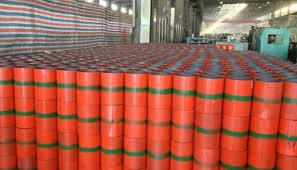- Afrikaans
- Albanian
- Amharic
- Arabic
- Armenian
- Azerbaijani
- Basque
- Belarusian
- Bengali
- Bosnian
- Bulgarian
- Catalan
- Cebuano
- Corsican
- Croatian
- Czech
- Danish
- Dutch
- English
- Esperanto
- Estonian
- Finnish
- French
- Frisian
- Galician
- Georgian
- German
- Greek
- Gujarati
- Haitian Creole
- hausa
- hawaiian
- Hebrew
- Hindi
- Miao
- Hungarian
- Icelandic
- igbo
- Indonesian
- irish
- Italian
- Japanese
- Javanese
- Kannada
- kazakh
- Khmer
- Rwandese
- Korean
- Kurdish
- Kyrgyz
- Lao
- Latin
- Latvian
- Lithuanian
- Luxembourgish
- Macedonian
- Malgashi
- Malay
- Malayalam
- Maltese
- Maori
- Marathi
- Mongolian
- Myanmar
- Nepali
- Norwegian
- Norwegian
- Occitan
- Pashto
- Persian
- Polish
- Portuguese
- Punjabi
- Romanian
- Russian
- Samoan
- Scottish Gaelic
- Serbian
- Sesotho
- Shona
- Sindhi
- Sinhala
- Slovak
- Slovenian
- Somali
- Spanish
- Sundanese
- Swahili
- Swedish
- Tagalog
- Tajik
- Tamil
- Tatar
- Telugu
- Thai
- Turkish
- Turkmen
- Ukrainian
- Urdu
- Uighur
- Uzbek
- Vietnamese
- Welsh
- Bantu
- Yiddish
- Yoruba
- Zulu
Exploring the Benefits and Applications of China Casing Couplings in Oil and Gas Industry
Understanding China Casing Coupling A Key Component in Oil and Gas Operations
Casing coupling plays a critical role in the operations of the oil and gas industry, particularly in the drilling and completion of wells. Among the leading producers worldwide, China has made significant advancements in manufacturing casing coupling technology, which is integral to ensuring the structural integrity of oil and gas wells.
What is Casing Coupling?
Casing coupling is a type of connector used to link sections of casing pipe together in a well. Casing itself is a series of steel pipes that line the wellbore, providing stability, preventing collapse, and protecting the groundwater from contamination. The coupling serves as a junction between these sections, promoting a seamless transition that can handle the high pressures and harsh environments commonly associated with drilling operations.
Importance of Casing Coupling in Drilling Operations
The integrity of oil and gas wells is paramount. Casing couplings must withstand extreme conditions, including high temperatures, high pressures, and corrosive environments. A failure in the casing system can lead to significant operational setbacks, environmental hazards, and financial losses. Therefore, the standards for casing couplings are rigid, and materials must be carefully chosen to meet specific rigors of each drilling operation.
China's Role in Casing Coupling Manufacturing
China has become a powerhouse in the manufacturing of casing couplings, evolving its technology and production methods to meet international standards. Chinese manufacturers have invested heavily in research and development, leading to innovations that enhance the durability and performance of casing couplings. Advances in metallurgy and manufacturing processes have allowed these couplings to be produced with better resistance to corrosion and fatigue.
china casing coupling

Chinese companies often collaborate with global energy firms to adapt their products to various geological conditions and operational requirements. This collaboration allows for the development of specialized couplings tailored for unique environments, ensuring operational efficiency and safety.
Quality Standards and Certification
To compete in the global market, Chinese casing couplings must meet rigorous quality standards. Certifications such as ISO 9001, API (American Petroleum Institute), and other international quality assurance guidelines are critical. These certifications affirm that the products have been tested and meet the necessary performance criteria. The commitment to quality has bolstered China's reputation internationally, making it a preferred supplier for many oil and gas companies.
Challenges and Future Prospects
Despite its advancements, the Chinese casing coupling industry faces challenges, such as fluctuating raw material prices, stringent environmental regulations, and increased competition from other manufacturing countries. To address these challenges, companies are focusing on sustainable practices and developing environmentally friendly technologies. The industry's future lies in adopting innovative techniques, such as automation and smart manufacturing processes, to enhance operational efficiency and reduce waste.
Moreover, as the global energy landscape shifts towards renewable sources, there is a growing emphasis on hybrid technologies that allow for the integration of traditional oil and gas operations with alternative energy sources. This evolution presents opportunities for Chinese manufacturers to diversify their product offerings and cater to a broader market.
Conclusion
Casing coupling is an essential component in the oil and gas industry, with significant implications for well integrity and operational efficiency. China's advancements in this area not only highlight its manufacturing capabilities but also set a benchmark for innovation and quality in the global market. As the industry continues to evolve, the role of casing couplings will remain critical, making ongoing investment in technology and quality assurance imperative for manufacturers in China and around the world.
-
Tubing Pup Joints: Essential Components for Oil and Gas OperationsNewsJul.10,2025
-
Pup Joints: Essential Components for Reliable Drilling OperationsNewsJul.10,2025
-
Pipe Couplings: Connecting Your World EfficientlyNewsJul.10,2025
-
Mastering Oilfield Operations with Quality Tubing and CasingNewsJul.10,2025
-
High-Quality Casing Couplings for Every NeedNewsJul.10,2025
-
Boost Your Drilling Efficiency with Premium Crossover Tools & Seating NipplesNewsJul.10,2025







